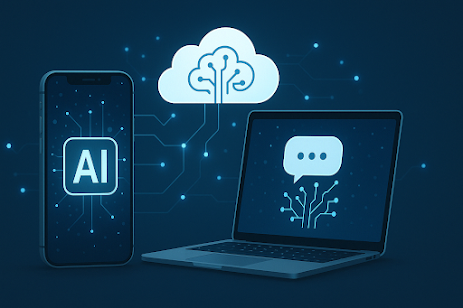Apple’s AI Strategy Unveiled Ahead of WWDC 2025: Local LLMs, Private Cloud Compute, and the Future of On-Device Intelligence
Apple’s AI Strategy Unveiled Ahead of WWDC 2025: Local LLMs, Private Cloud Compute, and the Future of On-Device Intelligence
As the world gears up for Apple’s WWDC 2025, the tech giant has already sparked major anticipation by previewing parts of its upcoming AI roadmap. In what’s being described as Apple’s most ambitious leap in artificial intelligence to date, the company is set to unveil a tightly integrated ecosystem built on on-device large language models (LLMs), private cloud compute, and AI features directly embedded into core iOS, macOS, and watchOS apps.
This pivot comes as competitors like Google, Microsoft, and Samsung push generative AI into everyday apps—making 2025 a pivotal year for consumer-grade AI intelligence.
1. Local LLMs: AI on Your iPhone, No Internet Needed
Apple is reportedly deploying its own compressed LLMs capable of running directly on iPhones, iPads, and Apple Silicon Macs without needing cloud connectivity.
Key Features:
-
Summarize emails, notes, or Safari pages locally
-
Rewrite messages and documents in Mail and iWork apps
-
Context-aware Siri, powered by device-specific memory
-
Offline support for transcriptions, translations, and autofill
Unlike cloud models, these will run on-device using Apple Neural Engine, prioritizing privacy, latency, and personalization.
2. Private Cloud Compute: AI with End-to-End Privacy
Apple’s new concept of Private Cloud Compute introduces a hybrid model where complex tasks too large for local devices are sent to Apple-controlled data centers—but with strict privacy guarantees.
-
Data is not stored permanently
-
Encrypted processing prevents model trainers or even Apple from accessing raw input
-
Apple has committed to auditable code for transparency
This strikes a balance between raw compute power and Apple’s privacy-first philosophy—a major differentiator from Google Gemini and OpenAI-powered offerings.
3. AI-Powered Siri and Systemwide Smart Actions
Siri is set to receive its biggest update since launch. Key improvements:
-
Memory-aware conversations: Siri can remember previous interactions across apps.
-
Proactive suggestions: Book flights, make calendar updates, or create reminders based on emails or messages.
-
Multi-modal understanding: Users can show photos or locations and ask questions about them.
Apple aims to integrate Siri more deeply into apps like Maps, Health, Home, Calendar, and Safari—turning it into a true AI assistant rather than just a voice search tool.
4. Integration with Vision Pro: AI Meets Spatial Computing
The upcoming visionOS 2.0 update will reportedly bring generative AI capabilities to the Apple Vision Pro headset, enabling:
-
Real-time scene understanding
-
Voice-guided environment interactions
-
Personalized UI generation based on user habits
This opens up new possibilities for productivity, fitness, and immersive app design in Apple’s AR/VR space.
5. App Developers Get AI APIs and CoreML Boosts
Apple is expected to announce:
-
New Swift-native AI APIs to integrate LLMs in third-party apps
-
Support for open-source model formats like GGML, Mistral, or LLaVA
-
Enhanced CoreML tooling to simplify deployment of custom models
This will empower developers to build smarter, privacy-friendly AI apps natively on Apple platforms.
6. Strategic Positioning Against Rivals
Apple’s approach to AI stands apart from:
-
Microsoft (cloud-first Copilot in Office apps)
-
Google (Gemini integrated across Android and Workspace)
-
Meta (open-source Llama and image generation)
Where others lean on server-side intelligence, Apple is building a privacy-preserving, decentralized AI experience—with your iPhone as the core processor.
Conclusion
Apple’s WWDC 2025 won’t just be about new features—it will mark a philosophical shift in how AI is built, deployed, and experienced. With a focus on trust, performance, and real-world utility, Apple aims to redefine the future of personal intelligence—and once again, set the standard for consumer technology.
All eyes now turn to Cupertino in June to see the full unveiling of this next-gen AI ecosystem.
